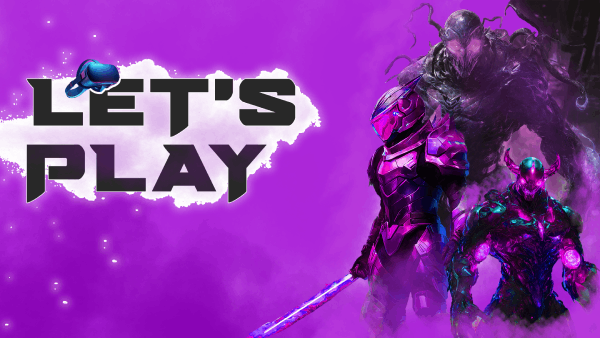
Top 5 blockchain technologies for game development

In recent years, the term “blockchain technology” has become increasingly familiar, especially in relation to cryptocurrencies such as Bitcoin. However, its true meaning may seem elusive and challenging to grasp for the average person. To fully understand what blockchain technology entails, it is crucial to explore the underlying technology, its mechanisms, and its growing significance in the digital realm.
As blockchain technology evolves and becomes more accessible to users, it becomes imperative for individuals to embrace this transformative technology and equip themselves for the future.
Decoding the Essence of Blockchain Technology
In its essence, blockchain technology operates through distributed and decentralized digital ledgers, free from reliance on a central repository. These ledgers possess tamper-evident properties, ensuring resistance against unauthorized modifications. Fundamentally, they enable users to record transactions within a shared ledger among a specific group. Once published, transactions become unchangeable within the standard functioning of a blockchain network. Every blockchain installation has an identifiable objective in mind, such as supporting cryptocurrencies, intelligent smart contracts, or (DLT) distributed ledger technology for enterprises.
The landscape of blockchain technology constantly evolves, characterized by a continuous stream of advancements and the regular introduction of new platforms. Beyond its association with cryptocurrencies, blockchain technology finds utility in establishing enduring, publicly accessible, and transparent ledger systems. Such systems can facilitate diverse applications, including the collection of sales data, tracking digital usage, and enabling fair compensation to content creators, such as musicians.
How Does Blockchain Technology Function?
If you are familiar with spreadsheets or databases, understanding a blockchain becomes easier. Like a database, a blockchain serves as a repository where information is inputted and stored. However, the key distinction lies in the structure and accessibility of the data.
A blockchain comprises scripts, which function similarly to programs in a database, handling tasks like data entry, access, and storage. Unlike a traditional database, a blockchain is distributed, meaning that multiple copies are stored on numerous machines, requiring all copies to match for validity.
The process starts with the blockchain collecting transaction information, which is then recorded in a block, analogous to a cell in a spreadsheet. When the block reaches its capacity, the data undergoes encryption through an algorithm, resulting in a hexadecimal number known as the hash.
The hash is subsequently incorporated into the header of the next block, alongside other block information, and encrypted as a unified entity. This forms a chain of interconnected blocks, creating the distinctive nature of a blockchain.
Certainly! Here are five blockchain technologies for game development, each with its own unique features and capabilities:
Enjin:
Enjin is a blockchain platform specifically designed for creating and integrating decentralized gaming experiences. It provides a robust set of tools and services for developers to create, manage, and monetize in-game items, virtual currencies, and assets.
Flow:
Flow is a blockchain platform developed by Dapper Labs, the team behind CryptoKitties and NBA Top Shot. It is designed to handle high transaction volumes and enable smooth user experiences for gaming applications. Flow offers developer-friendly tools and features, including non-fungible tokens (NFTs) and smart contracts.
TRON:
TRON is a blockchain platform known for its focus on decentralized applications (dApps) and gaming. It offers high transaction throughput and low fees, making it suitable for games with a large number of users. TRON’s ecosystem includes features like TRC-20 tokens and the ability to create and trade in-game assets.
WAX:
Worldwide Asset exchange (WAX) is a purpose-built blockchain platform for the creation, trading, and management of virtual items. It provides a decentralized marketplace infrastructure that enables secure and transparent peer-to-peer transactions. WAX also offers developer tools and APIs for integrating blockchain features into games.
NEO:
NEO is a blockchain platform often referred to as “China’s Ethereum” due to its similarities in smart contract functionality. NEO provides a robust development environment for creating decentralized applications and games. It supports multiple programming languages, making it accessible to a broader range of developers.
It’s important to note that the landscape of blockchain technologies is constantly evolving, and new platforms may emerge or gain popularity over time. It’s recommended to conduct further research and analysis to stay up-to-date with the latest advancements in blockchain technologies for game development.
Game Development Methodology We Use
Upon gathering the necessary information for the game project, our team embarks on creating a Game Design Document (GDD), a pivotal document encompassing all aspects of game development. This comprehensive document is meticulously prepared through extensive discussions and includes elements such as concept art, assets, game story, design, gameplay, unique selling points (USPs), features, and accessibility considerations.
The preparation of this document requires a variable amount of time, contingent upon the game’s complexity and its envisioned features.
Determining the Right Tech Stack for Game Development
Determining the type of game and the targeted platform (iOS, Android, or both) directly influences the selection of the appropriate tech stack for game development. The chosen platform significantly impacts the cost of game development.
Gaming prototypes
Creating a game prototype serves the purpose of providing a preliminary understanding of the game’s details and visuals. UI/UX designers utilize these prototypes to design the game accordingly. Based on the game prototype, designers and developers collaborate to create illustrations, game graphics, and desired features.
Game Development
Efficient game prototyping ensures seamless collaboration among all teams involved. With a shared objective, teams work together to design the game’s interface, visuals, and assets, adhering to the initial game prototype.
Programming games
The development team transforms the game ideas into reality by programming the game. They write code, set up databases, and integrate third-party APIs based on the agreed-upon prototype. The game design and logic are implemented during the programming phase to ensure the game functions as intended.
Game evaluation
Similar to other software, thorough testing is conducted on the game to ensure proper functionality of all features. If any bugs or technical issues are identified, they are communicated to the development team for resolution. This iterative process continues until the game is entirely free from bugs and meets all testing criteria.
Deployment of the game
Our team releases the game on various platforms, tailoring the deployment based on the target audience. We make use of popular platforms such as Google Play Store or App Store, considering the requirements of our clients and the platforms predominantly utilized by the target audience. Our objective is to maximize the game’s exposure and reach.
Final thoughts
In conclusion, the integration of blockchain technology in Game development Company holds tremendous potential to revolutionize the gaming industry. The five blockchain technologies discussed in this article – Non-Fungible Tokens (NFTs), Play-to-Earn (P2E) mechanics, decentralized marketplaces, provably fair gaming, and interoperability – are reshaping the way games are created, played, and monetized. Finally, the interoperability and cross-platform support offered by blockchain technology break down the barriers between different gaming platforms, allowing players to carry their progress, items, and achievements seamlessly. This enhances player experiences and expands the reach and longevity of games.
Blockchain technology is going to be essential for determining whether games are developed in the years to come as the gaming sector develops. By embracing these innovative technologies, game developers can create immersive experiences, foster player ownership, and tap into new monetization models, paving the way for a more decentralized, fair, and interconnected gaming landscape. The integration of blockchain technology is not just a trend; it is a fundamental shift that is here to stay, transforming the gaming industry as we know it.
<<<Get free consultation for Blockchain Game Development>>>>





